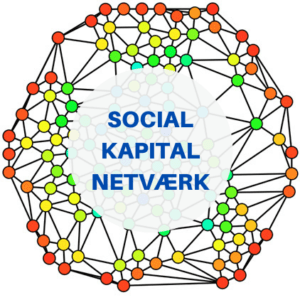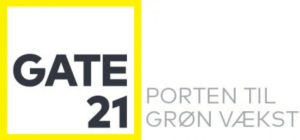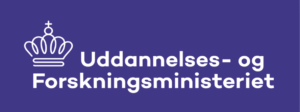
Revitalisation of our Network Group with Zoom, Mural and Excellent Facilitation
We finally got a meeting in the network again – and it was much needed! Throughout the network’s 7-year lifespan, all our
Many companies struggle to develop their innovation culture, and often their starting point is “We need an innovation culture”, or “How do we get an innovation culture”, or “We are too bogged down in everyday operations to have time for innovation”, or “We need a quick fix”. It seems like the approach to innovation culture is either too treat it as too complex to handle, or to view it as yet another “problem” which can be handled with a quick fix or a system.
Innovation is complex, when it comes to make it stick. But it is also complicated (which is an entirely different thing, and much easier to handle than complexity). And this is where INNOCULTURE, our new Innovation board game, comes in. This week I received the first 5 copies of the INNOCULTURE game, which we have developed in a joint project between FINN KOLLERUP as and Henning Grubb Basballe from Copenhagen Game Lab. We’ve spend more than 600 man-hours to develop this game, and we are very proud of it.
The INNOCULTURE board game is based on the European Innovation Management Standard CEN/TS 16555. The Standard consists of 7 documents:
I have discussed the standard in the blog post “Use the European Innovation Management Standard as your Innovation Checklist“. The standard represents a huge effort to identify all the different elements that need to be included in an efficient innovation management system. The underlying assumption is that innovation is a set of skills and practices, which to a large extent can be described. With innovation, there are definitely some things that are better to to than others. The problem is that the body of knowledge on innovation is very big and messy. No one really grasps the entire field. In the standard, this body of knowledge has been collected into a number of documents, where best practices have been described in a coherent manner.
The problem is of course that even with this standard pretty much in place, the amount of knowledge is still overwhelming, so how can we work with this in an engaging manner? That was the question we set out to answer, when we embarked on the development of the INNOCULTURE game.
Gamification is really gaining momentum, and is recognised as an excellent way to work with complex subjects, and to relate these to own practice. For example, online casino games that utilize gamification can help with that socialization aspect of playing in an actual casino, uniting people together and making these types of games more enjoyable to do. It is important to note that socialization can help casinos grow, that is why using this type of system will be beneficial for casino app development. You can get an excellent overview of how gamification relates to innovation from this TEDx talk by Gabe Zimmerman:
We have set sails to answer the following question:
How can we make a game based on the European Innovation Management Standard, that allows people to engage themselves to work with innovation culture, and at the same time learn about innovation best practices, and to subsequently apply this knowledge to create, apply and develop their own innovation management system?
To develop a learning game, many skills need to come together. Obviously, you need to have deep knowledge about the subject matter, in this case innovation – Finn Kollerup has been working with innovation for 20+ years (Check). You also need to have a solid knowledge about game mechanics – Henning Grubb Basballe and Copenhagen Game Lab has been developing games for over a decade (Check). You also need to make the game visually appealing – Josephine Dahl is a fantastic illustrator and creator of strong visual metaphors (Check).
In order to create the content, Finn scrutinised all the published elements of the European Innovation Management Standard, in order to identify key elements and drivers of innovation culture. The list of elements was indeed very long, and we had to make compromises a long the way, to arrive at a list that was recognised as important for innovation and at the same time comprehendible so that it could be easily understood in a learning setting.
The main focus areas of the INNOCULTURE Game are:
Each of the main headlines constitutes an element in the game, with innovation culture tying it all together:
The game can be played with groups of 4-6 people. In principle, there is no upper limit to the number of people that can play, but a total number of 30 people is typical, i.e. around 6 groups that compete with each other. The game is played in three rounds, through three scenarios of a fictitious company, which constitutes a 10 year period all together. Each scenario represents a typical set of innovation challenges. The players are briefed before each round, and presented with a description of the basic situation, together with three clues (e.g. letters, mails, news articles etc.) that relate to the given scenario. The group is also equipped with a number of chips, which represent the amount of resources available.
The groups task is now to decide which of the 6 focus areas to work with – but there is a catch: Since the number of resources is limited, the group can only pick two of the six focus areas. The choice of focus areas then scopes the resource allocation. In the first round, the players have 6 chips, which they can use in relation to the chosen focus areas.
For illustration purposes assume that a group has decided to concentrate on the focus areas Systems and Projects. This decision has been based on the groups experience, together with their discussion of the scenario description, and the clues related to the scenario. Once they have agreed on the two focus areas, these two focus pieces are turned, allowing to go into more detail on these two areas:
The two focus areas now reveal 10 specific initiatives:
Systems:
Projects:
Since the amount of initiatives exceeds the number of resources, the group has to agree somehow on the optimal resource allocation. Some initiatives will have more leverage than others, depending on the specific scenario, and this is reflected in the points given: A given resource allocation can have three outcomes:
In the next round, you are presented with a new scenario, and clues related to this. You also receive additional chips, and have to decide which two additional focus areas you will work on. The initial two areas are still in play.
In the final round, you choose the two remaining areas by default, and get a third scenario description with associated clues.
You may download an INNOCULTURE product sheet from our Materials & Methods section as well.
Please feel free to post comments to share your thoughts on how you use gamification in your innovation projects.

We finally got a meeting in the network again – and it was much needed! Throughout the network’s 7-year lifespan, all our

The collaboration with Finn Kollerup was very rewarding for us. He inspired our participants to think about their everyday challenges in a new

Our task was to facilitate an efficient process and collect the results from a high-profile meeting. A special factor was that the schedule